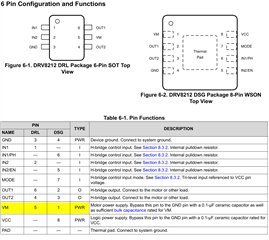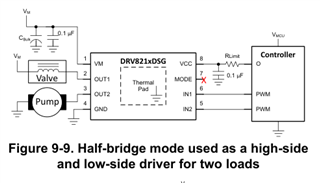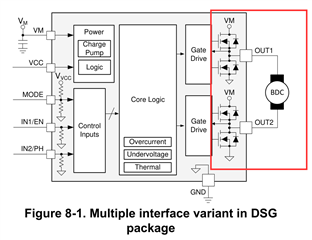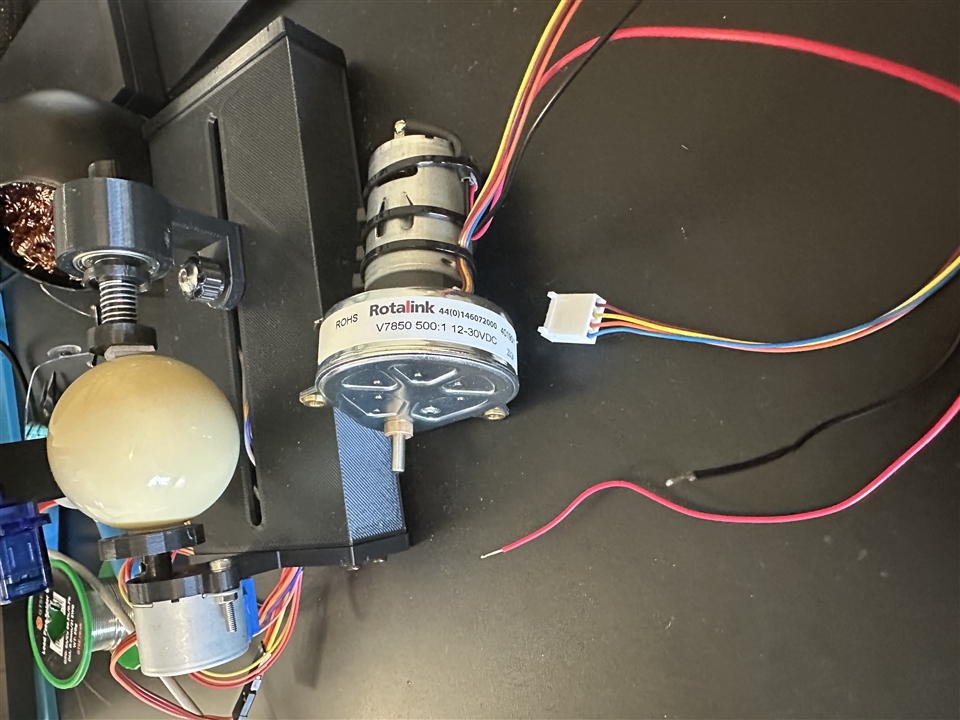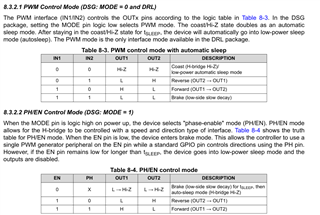Other Parts Discussed in Thread: TPS62933, DRV8220
Tool/software:
Hi everyone,
I'm working on a project that controls a 12V DC motor using a DRV8212 driver IC. The motor needs to run forward and backward based on commands from an MCU (Microcontroller Unit). I'm planning to use a PWM channel for speed control.
I've been reviewing the DRV8212DSGR datasheet and understand the functions of most pins. However, I'm unclear about the VM pin. There seems to be some confusion online about its purpose.
Here's my specific question:
Is the VM pin on the DRV8212:
- A voltage monitoring pin?
- A power output pin (if so, what's the input voltage source)?
- A power input pin (the datasheet mentions VCC for power supply)?
I'm using the DSB package of the DRV8212DSGR, which also has a VCC pin for power supply.
Additional Information:
- My main power source is a 16V-20V battery. I'm using a TPS62933 buck converter to regulate the voltage down to 12V for both the motor driver and the MCU.
- The MCU is powered by a separate 3.3V supply from a master board. The MCU acts as a slave device that controls the motor.
My Question:
Do I need to connect anything to the VM pin? Should I leave it floating, or connect it to the 12V output from the buck converter?
I appreciate any clarification and guidance on this topic. My project deadline is approaching, and I'd like to finalize this aspect of the design.
Thanks & Regards,


